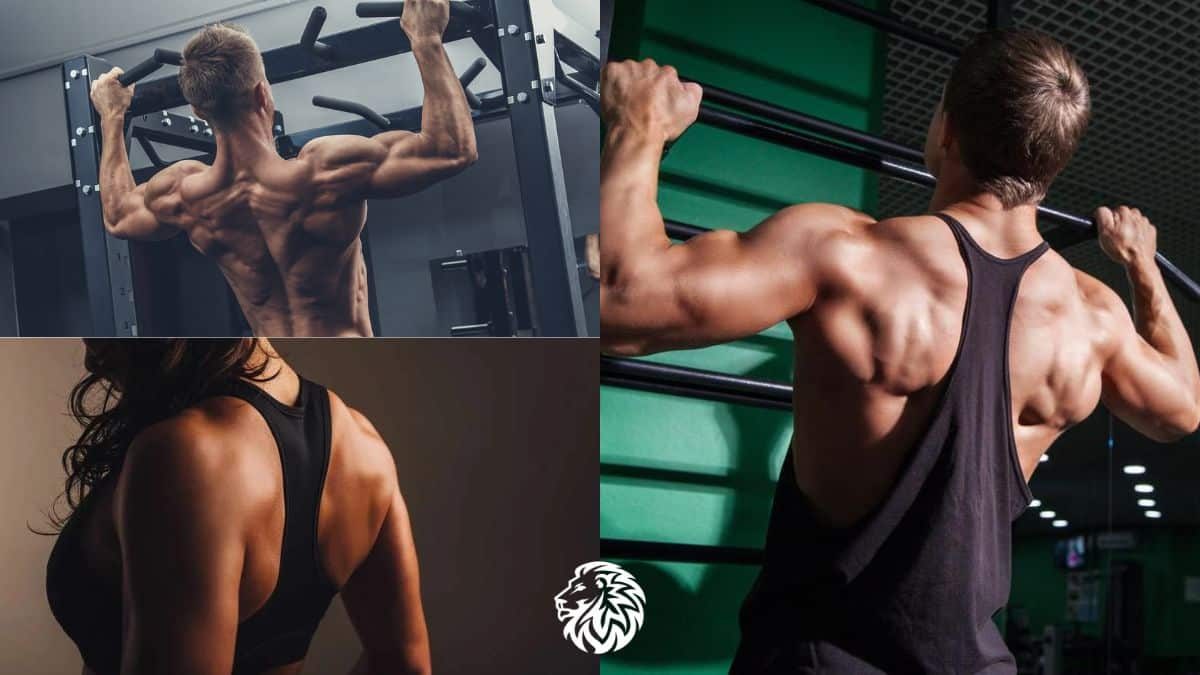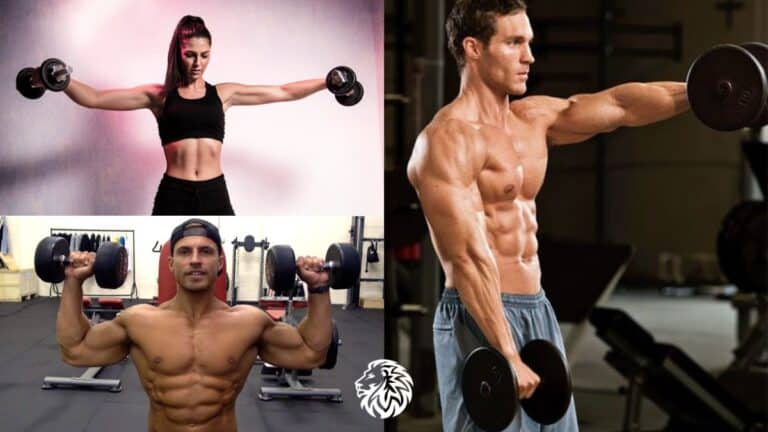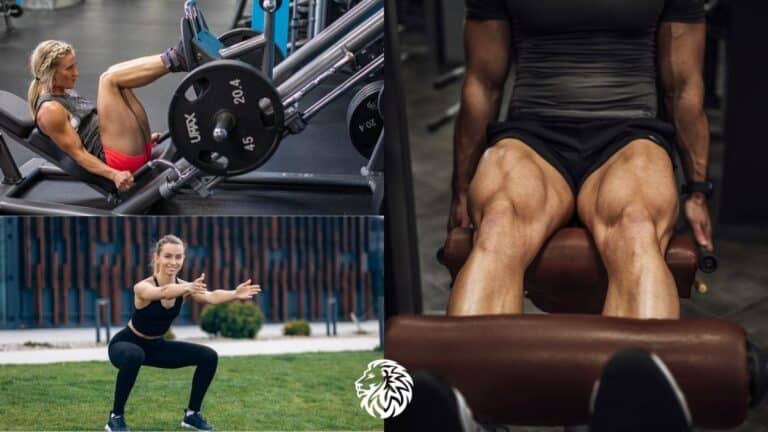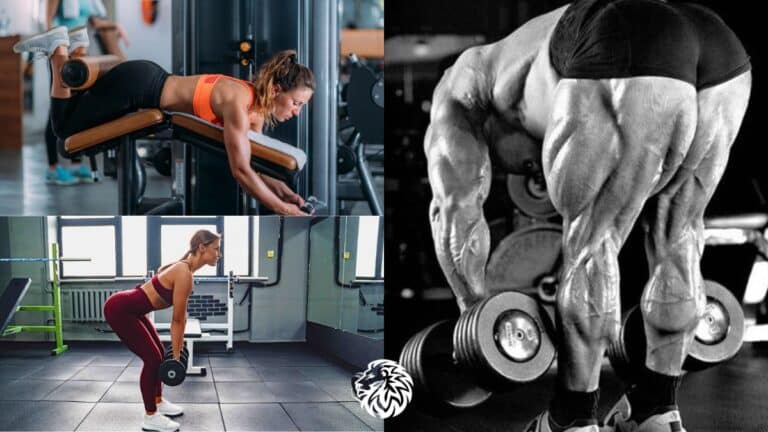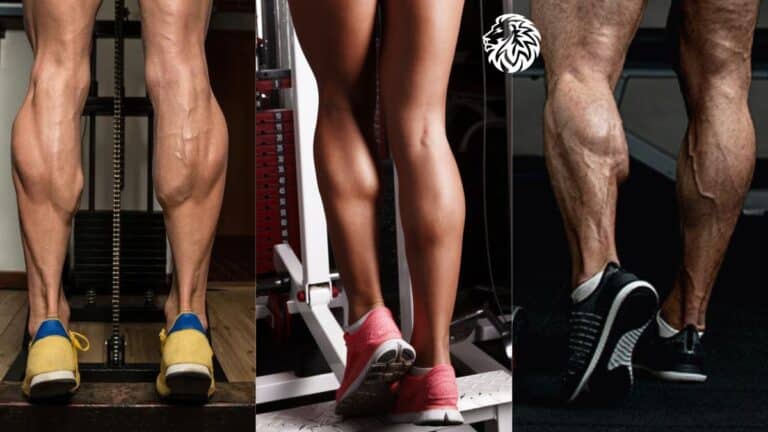A strong and sculpted back is not just a symbol of physical prowess, but it is also fundamental to overall health and fitness. In this introduction, we’ll delve into the reasons why focusing on your back muscles is crucial and what benefits it brings, both aesthetically and functionally.
Importance of a Strong and Sculpted Back
- Support and Stability: The back muscles play a key role in supporting the spine and maintaining proper posture. Strengthening these muscles can reduce the risk of back pain, which is a common issue in today’s sedentary lifestyle.
- Enhanced Athletic Performance: Many sports and physical activities rely heavily on back strength. A strong back contributes to power and stability, enhancing overall athletic performance.
- Aesthetic Appeal: A well-sculpted back adds to a balanced physique, contributing to the coveted V-shape torso in men and a toned, slender appearance in women.
- Improved Functional Strength: Everyday activities like lifting, bending, and twisting require back strength. A stronger back means these tasks can be performed more easily and with less risk of injury.
Overview of the Content
In the forthcoming sections, we will guide you through a comprehensive journey to achieve a strong and sculpted back. This guide will cover:
- Understanding Your Back Muscles: A look at the anatomy and functions of the back muscles.
- Effective Exercises for Sculpting Your Back: Detailed descriptions of exercises targeting different areas of the back.
- Incorporating Cardio and Flexibility: Understanding the role of cardio and flexibility in sculpting your back.
- Nutrition and Recovery: Tips on what to eat and how to recover for optimal muscle growth.
- Common Mistakes and How to Avoid Them: Insight into common pitfalls in back training and how to steer clear of them.
Each section is designed to provide you with knowledge and practical tips, whether you are just starting out or looking to enhance your current back training routine. Let’s embark on this journey towards a stronger, more sculpted back.
Understanding Back Muscles
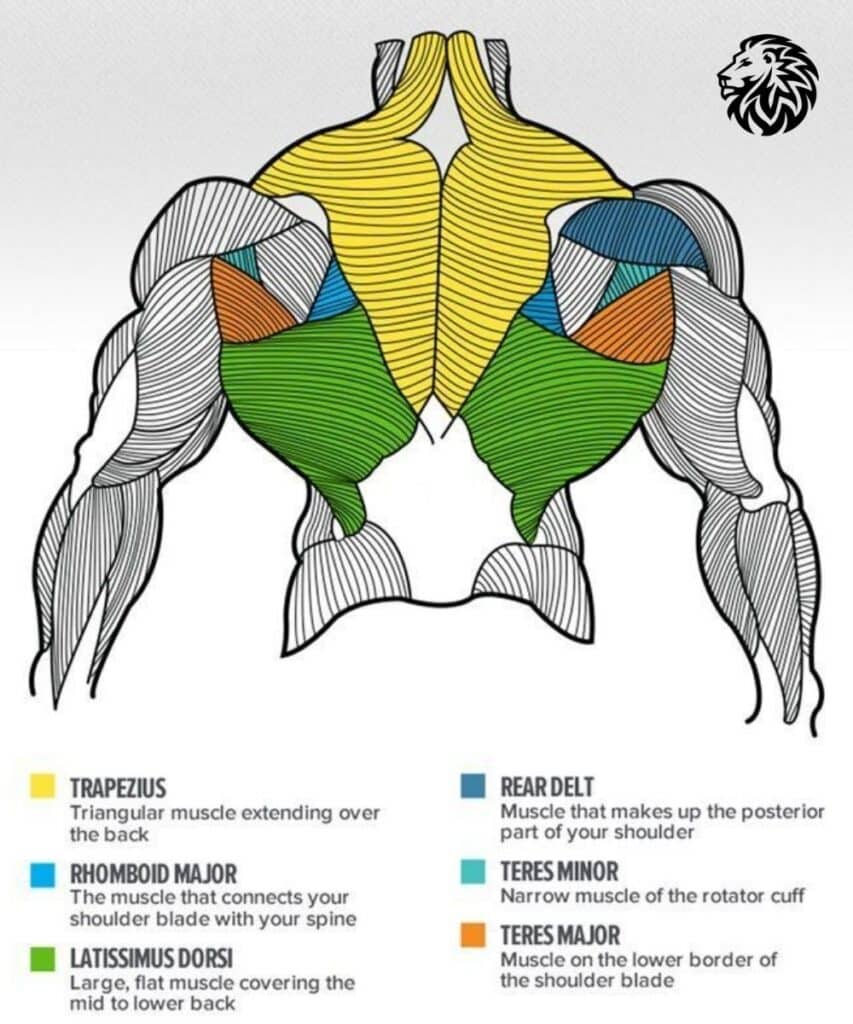
Anatomy of the Back Muscles
The back is a complex structure consisting of several muscle groups, each with its unique function and importance in the overall anatomy.
- Latissimus Dorsi: Often referred to as the “lats,” these are the largest muscles in the back. They extend from the mid to lower back and wrap around the sides under the arms, playing a key role in shoulder movement and providing that wide, V-shaped appearance.
- Trapezius: The trapezius or “traps” span the neck, shoulders, and mid-back. They are involved in moving, rotating, and stabilizing the shoulder blades (scapula) and extending the neck.
- Rhomboids: Located between the shoulder blades, the rhomboids are crucial for retracting, elevating, and stabilizing the scapula.
- Erector Spinae: This group of muscles runs along your spine. It’s essential for maintaining an upright posture and plays a role in bending and rotating the spine.
- Lower Back Muscles: Including muscles like the Quadratus Lumborum, these muscles are vital for spinal stability and are often engaged in exercises targeting the lower back.
The Role of Each Muscle Group in Back Sculpting
- Latissimus Dorsi: Developing the lats creates a wider back, contributing to the V-tapered look. Exercises like pull-ups and lat pulldowns specifically target this area.
- Trapezius: A well-developed trapezius muscle enhances the upper body’s aesthetic and supports neck and shoulder movements. Exercises like shrugs and upright rows are effective for sculpting the traps.
- Rhomboids: Strengthening the rhomboids improves posture and shoulder blade movement. Rowing exercises and reverse flys are great for targeting these muscles.
- Erector Spinae: A strong erector spinae is essential for a healthy spine and good posture. Deadlifts and back extensions are key exercises for this muscle group.
- Lower Back Muscles: Strengthening the lower back muscles is crucial for overall back health and injury prevention. Movements like deadlifts and hyperextensions are beneficial.
Understanding the anatomy and function of these muscles is crucial for effectively sculpting your back. Each muscle group plays a specific role, and a balanced workout routine should aim to target all of these areas to achieve a strong, well-proportioned, and functional back.
Preparation for Back Sculpting
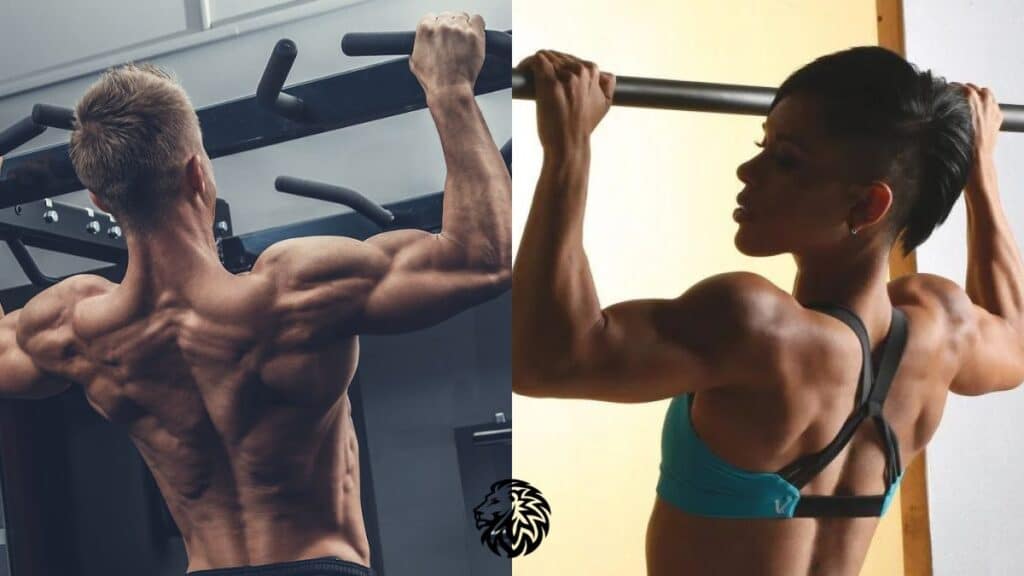
Before diving into any back sculpting exercises, it’s crucial to prepare your body adequately to prevent injury and enhance performance. This section focuses on the importance of warming up and provides a selection of recommended warm-up exercises specifically beneficial for back training.
Importance of Warming Up
- Injury Prevention: Warming up increases blood flow to the muscles, making them more pliable and less prone to strains and tears.
- Improved Performance: A proper warm-up can enhance muscle strength and flexibility, leading to improved performance in your back exercises.
- Mental Preparation: Warming up also helps mentally prepare for the workout ahead, allowing you to focus and execute exercises with better form.
- Enhanced Mobility: Specifically for the back, warming up helps in loosening the spine and shoulder joints, crucial for many back exercises.
Recommended Warm-Up Exercises
- Dynamic Stretching: Instead of static holds, engage in dynamic stretches which mimic the movements of the exercises you’ll be performing. Examples include arm circles, cat-cow stretches, and torso twists.
- Light Cardio: Begin with 5-10 minutes of light cardio such as brisk walking, jogging, or cycling. This helps to raise your overall body temperature and increase blood flow to the muscles.
- Band Pull-Aparts: Using a resistance band, perform pull-aparts to engage the shoulder blades and upper back muscles, which is essential for exercises like rows and pull-ups.
- Scapular Push-Ups: Focus on the movement of the shoulder blades to warm up the scapular region, which is important for almost all back movements.
- Hyperextensions (without weight): To activate the lower back, perform a few hyperextensions on a Roman chair or stability ball, but without any added weight.
- Foam Rolling: Targeting the upper and lower back, foam rolling can help in releasing muscle tightness and improving mobility.
- Planks: A quick plank session can help to engage and stabilize the core, which is crucial for supporting the back during exercises.
Incorporating these warm-up exercises into your routine can significantly contribute to a more effective and safer back sculpting workout. It’s important to listen to your body during the warm-up and adjust the intensity accordingly, ensuring that you are fully prepared for the training session ahead.
Back Sculpting Exercises

Sculpting a strong and well-defined back requires a combination of exercises that target different muscle groups. This section focuses on exercises specifically designed for upper back sculpting.
Upper Back Sculpting
- Lat Pulldowns
- Description: This exercise primarily targets the latissimus dorsi muscles, contributing to the width of the upper back.
- How to Perform: Sit at a lat pulldown machine, grab the bar wider than shoulder-width, and pull the bar down towards your chest, keeping your back straight and core engaged.
- Variations: You can vary the grip (wide, narrow, reverse) to target different parts of the lats.
- Pull-Ups and Chin-Ups
- Description: Pull-ups and chin-ups are excellent for overall upper back development, engaging the lats, traps, and even the biceps.
- How to Perform: Hang from a pull-up bar with your hands slightly wider than shoulder-width (pull-up) or palms facing you (chin-up), and pull yourself up until your chin is above the bar.
- Modifications: If you’re unable to perform a full pull-up or chin-up, assisted variations using bands or machines can be used.
- Barbell or Dumbbell Rows
- Description: Rows are key for targeting the middle and upper back, including the rhomboids and traps.
- How to Perform: For barbell rows, bend over with a barbell, keeping your back straight, and pull the bar towards your lower chest. For dumbbell rows, use one hand and knee on a bench for support and pull the dumbbell upwards to your side.
- Variations: Try different angles and grips to engage various parts of the back.
Tips for Maximizing Effectiveness
- Focus on Form: Quality over quantity is crucial. Ensure you’re performing each exercise with proper form to engage the intended muscles effectively.
- Mind-Muscle Connection: Concentrate on the muscles you’re working. This mental focus can enhance muscle activation and growth.
- Controlled Movements: Avoid using momentum to lift the weight. Controlled, deliberate movements will increase the exercise’s effectiveness.
- Progressive Overload: Gradually increase the weight or resistance to continually challenge your muscles.
- Rest and Recovery: Allow sufficient rest between sets and workouts to let your muscles recover and grow.
- Balanced Routine: Incorporate these exercises into a balanced workout routine that targets all major muscle groups for overall symmetry and strength.
Incorporating these exercises and tips into your routine will significantly aid in developing a sculpted and strong upper back. Remember, consistency and dedication are key to achieving and maintaining your back sculpting goals.
Mid Back Strengthening
Strengthening the mid-back is crucial for overall back health, posture, and creating a balanced, muscular back. The following exercises specifically target this area, focusing on muscles like the rhomboids, middle trapezius, and rear deltoids.
- Seated Cable Rows
- Description: This exercise targets the muscles in the middle back, enhancing strength and endurance.
- How to Perform: Sit at a low cable row machine with your feet braced. Grasp the cable attachment with both hands. Keeping your back straight, pull the cable towards your waist while squeezing your shoulder blades together. Slowly return to the starting position.
- Variations: You can vary your grip (wide, narrow, underhand, or overhand) to subtly change the muscles worked.
- T-Bar Rows
- Description: T-Bar Rows focus on the entire back, particularly the middle back muscles.
- How to Perform: Stand over a T-bar row machine, bend your knees slightly, and lean forward from your waist. Grasp the handles with both hands, and pull the weight towards your chest, keeping your elbows close to your body. Return slowly to the start.
- Safety Tip: Avoid rounding your back as this can put undue stress on your spine.
- Face Pulls
- Description: Face pulls are excellent for targeting the rear deltoids, upper trapezius, and the muscles of the mid-back.
- How to Perform: Attach a rope to a high pulley of a cable station. Grasp each end of the rope with your palms facing each other. Pull the rope towards your face while flaring your elbows out and squeezing your shoulder blades.
- Benefits: This exercise is also great for shoulder health and posture correction.
Exercise Technique and Safety Tips
- Engage Your Core: Always keep your core muscles engaged during these exercises to support your lower back.
- Controlled Movements: Perform each exercise with controlled, steady movements to maximize muscle engagement and minimize the risk of injury.
- Proper Posture: Maintain a neutral spine and avoid excessive arching or rounding of the back.
- Avoid Overloading: While progressive overload is important, avoid lifting too heavy too soon as it can lead to poor form and potential injury.
- Breathe Properly: Breathe out when exerting force (pulling the weight) and breathe in when returning to the starting position.
- Range of Motion: Ensure full range of motion for each exercise to fully engage the muscles and promote flexibility.
- Warm-Up: Always perform a general warm-up before starting your workout and a specific warm-up for the back before these exercises.
Incorporating these exercises into your back workout routine will significantly contribute to strengthening your mid-back muscles, leading to better posture, reduced back pain, and a more balanced physique. Remember, consistency is key, as is listening to your body to avoid overexertion.
Lower Back Development
Developing the lower back is essential for overall back strength, good posture, and injury prevention. The following exercises are effective for strengthening this area, but it’s crucial to perform them with correct technique to avoid injury.
- Deadlifts
- Description: Deadlifts are a compound exercise that engages multiple muscle groups, primarily targeting the lower back, glutes, and hamstrings.
- How to Perform: Stand with your feet hip-width apart, with the barbell over your feet. Bend at your hips and knees, grip the barbell with hands just outside your legs. Keep your back in a neutral position, and lift the bar by straightening your hips and knees.
- Safety Tip: Avoid rounding your back during the lift, as this can put significant strain on your lower back.
- Hyperextensions
- Description: Hyperextensions focus on the erector spinae muscles in the lower back.
- How to Perform: Position yourself in a hyperextension bench, securing your ankles. Cross your arms over your chest or place your hands behind your head. Bend forward at the waist, then raise your upper body back up to a straight position.
- Modifications: To increase difficulty, you can hold a weight plate against your chest.
- Good Mornings
- Description: This exercise targets the lower back, hamstrings, and glutes.
- How to Perform: Stand with your feet shoulder-width apart, a barbell resting on your shoulders. Keeping your legs straight and back neutral, bend at the hips to lower your torso parallel to the floor, then return to the upright position.
- Safety Tip: Start with a light weight to ensure proper form and avoid putting too much strain on your back.
Guidelines for Protecting the Lower Back During Workouts
- Maintain Proper Form: Always prioritize form over weight. Incorrect form, especially in lower back exercises, can lead to serious injuries.
- Strengthen Your Core: A strong core supports your lower back. Incorporate exercises like planks and leg raises to build core strength.
- Gradual Progression: Increase weight and intensity gradually. Making large jumps in weight can overwhelm your lower back.
- Avoid Jerky Movements: Perform each exercise with controlled, smooth motions. Avoid any jerky or bouncing movements which can jolt the spine.
- Use Supportive Gear: Consider using a weightlifting belt for heavy lifts like deadlifts to provide additional lower back support.
- Listen to Your Body: If you feel pain (not to be confused with muscle fatigue), stop the exercise. Pain is an indicator that something is wrong.
- Warm-Up and Stretch: Always start with a warm-up to prepare your muscles and follow up with stretches post-workout to maintain flexibility.
- Rest and Recovery: Allow adequate recovery time for your lower back muscles to heal and grow stronger.
Incorporating these exercises and guidelines into your workout routine will help in safely developing a stronger lower back, which is a cornerstone for overall physical health and performance.
Incorporating Cardio and Flexibility Training
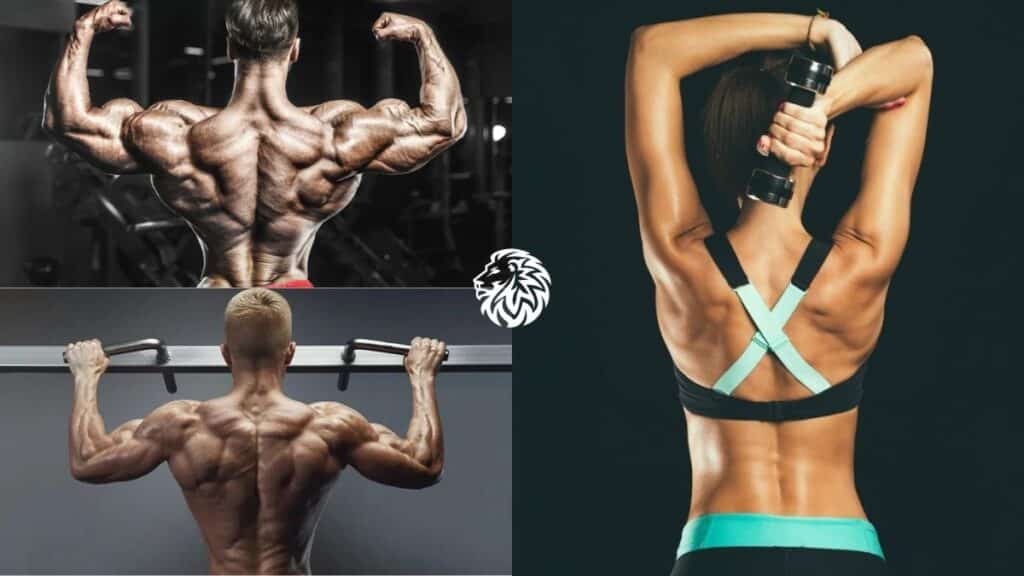
In the pursuit of a sculpted back, it’s essential not to overlook the roles of cardio and flexibility training. These components are vital for overall fitness and play a significant role in developing a strong, healthy back.
The Role of Cardio in Back Sculpting
- Fat Loss: Cardiovascular exercises help in burning calories and reducing body fat, which is crucial for revealing the muscles and definition in your back.
- Increased Blood Flow: Improved circulation from cardio exercises ensures better delivery of nutrients to the back muscles, aiding in recovery and growth.
- Enhanced Stamina and Endurance: Regular cardio training improves overall stamina and endurance, which can enhance your ability to perform back-strengthening exercises more effectively.
Flexibility Exercises for a Healthy Back
- Child’s Pose: Stretches the muscles of the lower back and helps in relieving tension.
- Cat-Cow Stretch: Improves flexibility in the spine, relieves tension in the torso, neck, and shoulders.
- Spinal Twists: These stretches help in maintaining spinal mobility and can alleviate back stiffness.
- Hamstring Stretch: Tight hamstrings can contribute to lower back pain, so it’s important to keep them flexible.
- Hip Flexor Stretch: Tight hip flexors can also affect the lower back, making these stretches equally important.
Balancing Strength, Cardio, and Flexibility
- Create a Holistic Workout Plan: Your workout routine should include a balance of strength training, cardio, and flexibility exercises. Aim to incorporate all three components throughout the week.
- Avoid Overtraining One Area: While it’s important to focus on back sculpting, ensure you’re not neglecting other muscle groups or aspects of fitness like cardio and flexibility.
- Combine Activities: On some days, you can combine cardio and flexibility training. For example, a yoga session can serve both as a flexibility workout and a mild cardiovascular exercise.
- Listen to Your Body: Pay attention to how your body feels. If you’re feeling particularly sore or stiff, you might emphasize flexibility and light cardio over strength training.
- Regular Rest Days: Incorporate rest days into your routine to allow your muscles time to recover and grow.
- Vary Your Cardio: Choose different forms of cardio (like cycling, swimming, or HIIT) to keep the routine enjoyable and effective.
- Consistency is Key: Consistent effort in all three areas is essential for balanced development and preventing injury.
In summary, a comprehensive approach to back sculpting involves not only targeted strength exercises but also regular cardio and flexibility training. This holistic approach ensures not just a sculpted back, but also overall health, fitness, and wellbeing.
Nutrition and Back Sculpting

Nutrition plays a crucial role in sculpting a strong, muscular back. The right diet not only fuels your workouts but also aids in muscle recovery and growth. Here’s a guide to optimize your nutrition for back muscle development.
Dietary Tips for Muscle Building
- Adequate Protein Intake: Protein is essential for muscle repair and growth. Include lean sources like chicken, turkey, fish, lean beef, eggs, dairy, and plant-based options like lentils, chickpeas, and tofu.
- Balanced Carbohydrates: Carbohydrates are your body’s primary energy source. Opt for complex carbs like whole grains, fruits, vegetables, and legumes, which provide sustained energy and fiber.
- Healthy Fats: Include sources of healthy fats such as avocados, nuts, seeds, olive oil, and fatty fish. Fats are vital for hormonal balance and overall health.
- Regular Meals: Eating at regular intervals helps maintain energy levels and provides a constant supply of nutrients to the muscles.
- Caloric Surplus for Muscle Gain: If you’re looking to build muscle, you may need to consume more calories than you burn. However, this should be done carefully to ensure quality muscle gain.
Importance of Hydration
- Muscle Function: Muscles are about 75% water, and even slight dehydration can impair muscle function and recovery.
- Transportation of Nutrients: Proper hydration ensures the effective transport of nutrients to the muscles, which is essential for muscle growth and repair.
- Joint Health: Adequate hydration helps keep joints lubricated, which is important for exercise performance and preventing injuries.
Supplements for Back Muscle Development
- Protein Supplements: Whey, casein, or plant-based protein powders can be a convenient way to ensure you’re getting enough protein, especially post-workout.
- Creatine: Creatine can improve strength, increase lean muscle mass, and help muscles recover more quickly during exercise.
- Branched-Chain Amino Acids (BCAAs): These amino acids (leucine, isoleucine, valine) can promote muscle protein synthesis and increase muscle growth over time.
- Omega-3 Fatty Acids: Found in fish oil supplements, they can aid in muscle recovery and joint health.
- Vitamin D and Calcium: Important for bone health, which is foundational for a strong back and overall muscular system.
A Word of Caution: Before taking any supplements, it’s advisable to consult with a healthcare professional, especially if you have underlying health conditions or are on medication.
Incorporating these nutritional strategies can significantly enhance your back sculpting efforts. Remember, a balanced diet combined with a well-structured workout plan is the key to building a strong, muscular back.
Recovery and Rest
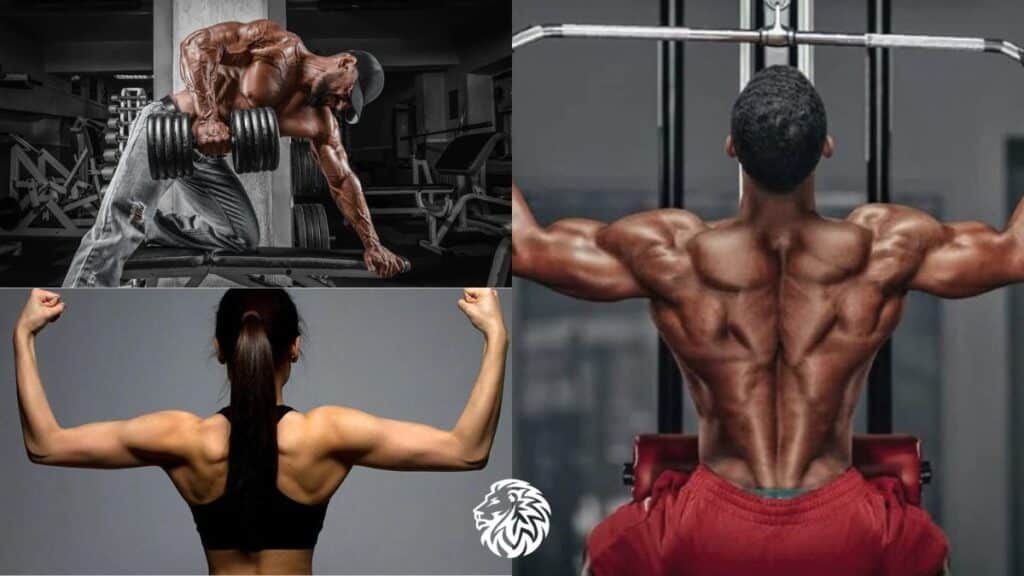
Recovery and rest are as crucial as the workout itself in the muscle-building process, particularly when it comes to sculpting a strong and healthy back. This section will explore the importance of rest days and various recovery techniques.
Importance of Rest Days in Muscle Building
- Muscle Repair and Growth: Muscle growth occurs during rest, not during the workout. Exercise creates micro-tears in muscle fibers, and rest days allow these fibers to repair and grow stronger.
- Prevention of Overtraining: Rest helps prevent overtraining, which can lead to exhaustion, decreased performance, and increased risk of injury.
- Restoration of Energy Stores: Rest days help replenish glycogen stores in your muscles, which are depleted during exercise.
- Mental Health Benefits: Taking a break can also provide mental relief, reducing the risk of burnout and keeping motivation levels high.
Recovery Techniques
- Adequate Sleep
- Role in Recovery: Quality sleep is vital for muscle recovery, hormonal balance, and overall health. Growth hormone, which is crucial for muscle development, is released during deep sleep.
- Tips for Better Sleep: Maintain a regular sleep schedule, create a restful sleeping environment, and avoid caffeine and screens before bedtime.
- Massage
- Benefits: Massage can reduce muscle tension, increase circulation, and aid in recovery by facilitating the removal of waste products from muscle tissue.
- Types of Massage: Deep tissue massage, sports massage, or even self-massage techniques like foam rolling can be beneficial.
- Stretching
- Importance for Recovery: Regular stretching helps maintain muscle flexibility, reduces stiffness, and can aid in recovery.
- Stretching Techniques: Static stretches, where you hold a stretch for 20-30 seconds, can be done post-workout. Gentle yoga is also excellent for recovery and flexibility.
- Active Recovery
- Concept: Active recovery involves performing light, non-strenuous exercise on rest days. This can include activities like walking, swimming, or yoga.
- Benefits: It helps to increase blood flow to the muscles without putting too much strain on them, aiding in muscle recovery and reducing soreness.
- Nutrition and Hydration
- Nutritional Support: Consuming a balanced diet rich in proteins, carbohydrates, fats, and micronutrients can significantly aid in recovery.
- Stay Hydrated: Adequate hydration is essential for optimal recovery and overall bodily functions.
By integrating these rest and recovery strategies into your fitness routine, you can maximize your muscle-building efforts and maintain a healthy, well-functioning body. Remember, rest days are not about being inactive but about allowing your body the time it needs to recover and grow stronger.
Creating a Balanced Back Sculpting Routine
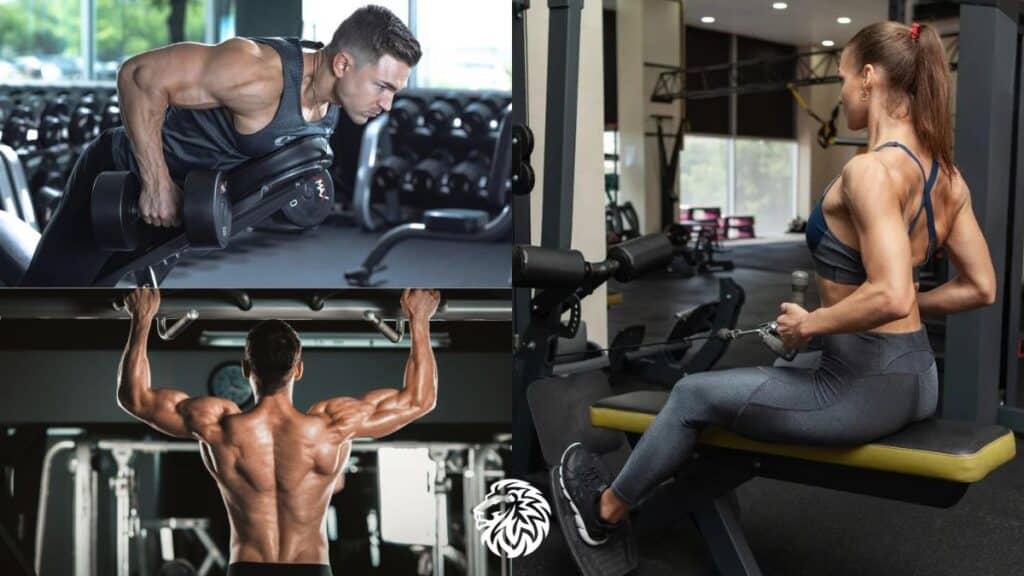
A balanced back sculpting routine is key to achieving and maintaining a strong, well-defined back. This involves designing a weekly workout plan, adjusting intensity and volume over time, and continuously monitoring progress.
Designing a Weekly Workout Plan
- Frequency of Back Workouts: Aim for 2-3 back-specific workouts per week, allowing at least 48 hours of rest between sessions for recovery.
- Incorporate Variety: Include a mix of exercises targeting different areas of the back (upper, mid, and lower) in each session.
- Balance with Other Muscle Groups: Ensure your weekly plan also targets other major muscle groups to maintain overall body balance and prevent overuse injuries.
- Include Cardio and Flexibility: Allocate days for cardio and flexibility training, which are essential for overall fitness and back health.
Adjusting Intensity and Volume Over Time
- Progressive Overload: Gradually increase the weight, reps, or sets over time to continuously challenge your muscles.
- Varying Exercise Types: Regularly change up your exercises to prevent plateaus and keep the workouts engaging.
- Intensity Techniques: Incorporate techniques like supersets, drop sets, or pyramid sets to enhance intensity.
- Listen to Your Body: If you’re feeling fatigued or experiencing pain, it might be a sign to reduce the intensity or volume temporarily.
Monitoring Progress and Making Adjustments
- Track Your Workouts: Keep a workout log to track the exercises, weights, sets, and reps. This helps in monitoring progress and planning future workouts.
- Regular Assessments: Periodically assess your strength gains, muscle development, and overall physical appearance. This can be done through personal observations, progress photos, or measurements.
- Adjust Based on Goals: If your goal is muscle gain, focus on lifting heavier weights with fewer reps. If it’s endurance or toning, increase the reps with moderate weights.
- Stay Flexible with Your Plan: Be open to making adjustments to your routine based on your progress and any changing goals or circumstances.
- Seek Feedback: Consider getting feedback from a trainer or coach, especially if you hit a plateau or are not seeing expected results.
Creating and adhering to a balanced back sculpting routine is a dynamic process. It requires patience, consistency, and a willingness to adapt your approach as you progress. Remember, the key to success is not just in the routine itself but also in how well it aligns with your individual goals, lifestyle, and body’s responses.
Common Mistakes to Avoid in Back Training
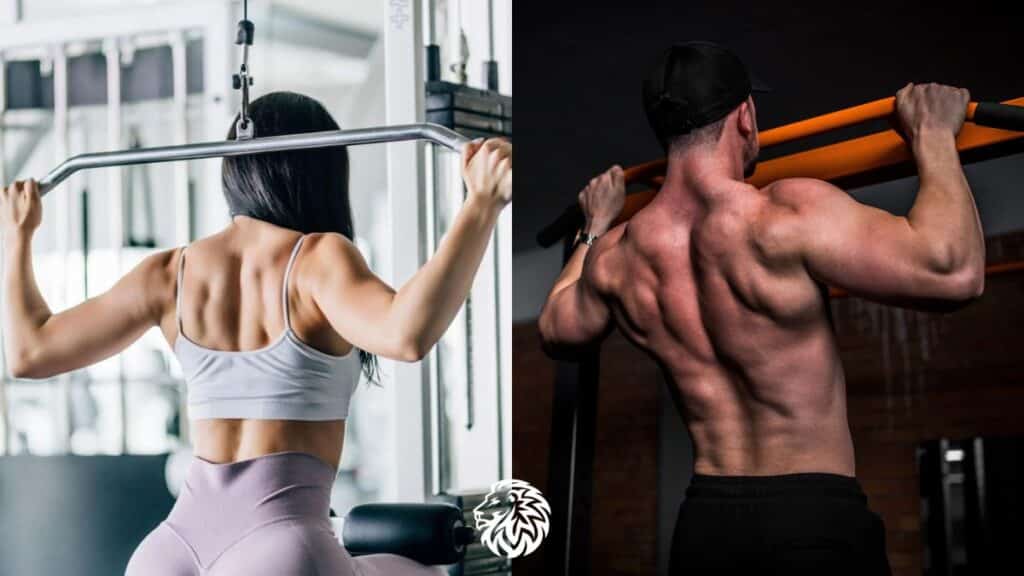
Back training, when done incorrectly, can lead to poor results and even injury. Here are some common mistakes to be aware of and tips on how to avoid them.
- Neglecting Proper Form
- Error: Compromising on form, especially during complex lifts like deadlifts and rows.
- Avoidance: Focus on learning the correct technique before increasing weight or intensity. Consider working with a trainer for guidance.
- Ignoring Other Muscle Groups
- Error: Focusing solely on the back and neglecting other muscle groups can lead to imbalances.
- Avoidance: Ensure a well-rounded workout routine that targets all major muscle groups.
- Overtraining
- Error: Exercising the back muscles too frequently without adequate rest.
- Avoidance: Allow at least 48 hours of rest between intense back workouts and incorporate rest days into your routine.
- Lifting Too Heavy Too Soon
- Error: Using weights that are too heavy for your current level, leading to poor form and potential injury.
- Avoidance: Gradually increase weight, focusing on maintaining proper form.
- Skipping Warm-Up and Cool-Down
- Error: Jumping into intense back exercises without warming up or skipping post-workout stretches.
- Avoidance: Begin each session with dynamic stretches and light cardio, and end with cool-down stretches.
- Lack of Variety in Exercises
- Error: Repeating the same exercises and routines, which can lead to plateaus.
- Avoidance: Regularly change your workout routine and include a variety of exercises.
- Ignoring Core Strength
- Error: Not incorporating enough core exercises, which are crucial for back strength and stability.
- Avoidance: Add core-strengthening exercises to your routine.
- Not Adjusting for Personal Limitations
- Error: Ignoring personal limitations such as past injuries or mobility issues.
- Avoidance: Tailor your workout to accommodate any physical constraints and consult with health professionals when needed.
- Poor Nutrition and Hydration
- Error: Neglecting the importance of a balanced diet and adequate hydration for muscle growth and recovery.
- Avoidance: Maintain a nutrient-rich diet and stay hydrated, especially on training days.
- Inconsistent Training
- Error: Lack of consistency in the workout routine.
- Avoidance: Stick to a regular workout schedule and set realistic, achievable goals.
By being aware of these common mistakes and actively working to avoid them, you can ensure a more effective, safe, and sustainable approach to back training. Remember, achieving a strong, sculpted back is a gradual process that requires patience, consistency, and attention to overall health and fitness.
Conclusion
In our comprehensive exploration of how to sculpt a strong and healthy back, we’ve covered a range of crucial topics, each playing a vital role in achieving your back sculpting goals. Here’s a brief recap and some final words of encouragement.
Recap of Key Points
- Understanding Back Muscles: A solid grasp of the different muscle groups in your back is the foundation for effective training.
- Preparation for Sculpting: Emphasizing the importance of warming up to prevent injury and prepare your muscles for the workout.
- Exercise Selection: We explored targeted exercises for upper, mid, and lower back, offering techniques to effectively work each area.
- Incorporating Cardio and Flexibility: Highlighted the importance of balancing strength training with cardio and flexibility exercises for overall back health and aesthetics.
- Nutrition and Hydration: Discussed the critical role of a balanced diet and staying hydrated in muscle development and recovery.
- Recovery and Rest: Stressed the importance of rest days and recovery techniques for muscle repair and growth.
- Creating a Balanced Routine: Outlined how to design a well-rounded workout plan, adjusting intensity and volume, and the importance of monitoring progress.
- Common Mistakes: Identified frequent errors in back training and provided tips on how to avoid them.
Encouragement to Maintain Consistency and Patience
Achieving a sculpted back is a journey that requires dedication, consistency, and patience. Remember, progress in body sculpting doesn’t happen overnight. It’s a gradual process that unfolds over time with persistent effort. Celebrate the small victories along the way, whether it’s lifting heavier weights, noticing improved posture, or feeling stronger and more energetic.
Stay committed to your routine, be patient with your body, and allow it the time it needs to adapt and grow. Be flexible in your approach, willing to adjust your routine as needed, and always listen to your body, especially when it signals for rest.
Above all, keep in mind that sculpting your back is not just about improving appearance, but also about enhancing overall health and well-being. With the right approach, not only will you achieve a stronger, more defined back, but you’ll also enjoy the benefits of a healthier, more active lifestyle.
Stay motivated, keep pushing forward, and enjoy the journey to achieving a sculpted and strong back.
